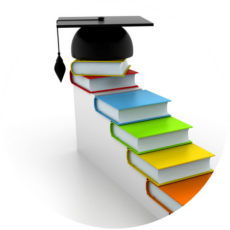
The K-12 Educational Transition Journey
Students moving from preschool to middle school and then to high school go through the K-12 educational transitions. For students with disabilities, transitions can be challenging, as they may require additional accommodations and support to adjust to changing academic and social environments.
Common Concerns for Students with Disabilities During Educational Transitions:
- Loss of Support: Students with disabilities may lose the support and services they received in their previous educational setting when transitioning to another setting. This can disrupt their academic progress and social connections.
- Changes in Expectations: A new educational setting may have different academic and social expectations for students with disabilities. It may require them to perform at a higher level academically or participate in unfamiliar activities.
- Lack of Communication: There may be a lack of communication between the student, their parents, and the new school regarding their needs and accommodations. This can lead to misunderstandings and delays in receiving support.
- Unfamiliar Environment: Changing academic and social environments can be overwhelming for students with disabilities. They may struggle to navigate new spaces, routines, and social norms.
- Limited Social Opportunities: Social connections may be limited for students with disabilities in newly introduced settings. Isolation and exclusion may follow.
- Transportation: Some students with disabilities may require specialized transportation to get to their new school, and this can be a source of stress and anxiety for both the student and their parents.
Tips to Help your Student with a Disability Prepare:
- Start Early: Talk with your students and their teachers about the transition in advance. Give your student plenty of time to adjust to the idea and think about their goals beforehand.
- Develop a Transition Plan: Considerations when transitioning to a new school can be part of your student’s Individualized Education Program (IEP), inviting the LEA from the new school to the transition planning meeting can give the team an idea of the type of appropriate accommodations and services that will help the student’s new environment and structure.
- Schedule a Visit: Visit the new school ahead of time so that your students can become familiar with the layout and meet some of the staff and students. This can reduce anxiety and make the transition smoother.
- Build Self-Advocacy Skills: Encourage your student to become more involved in their IEP meetings and advocate for their own needs and goals. This will help them become more independent and confident as they transition to high school.
- Explore Extracurricular Activities: Help your student explore extracurricular activities and clubs that align with their interests and goals. This can help them make new friends and feel more connected to the school community.
- Build Organizational Skills: Work with your student to develop organizational skills that will help them manage their time and workload. This may include using a planner or digital calendar, breaking down assignments into smaller concepts, and prioritizing tasks.
By addressing these concerns proactively, students with disabilities can successfully navigate educational transitions and thrive in the changing academic and social environment. Consider the following links and resources below for additional support.
Preschool to Elementary School
Starting Kindergarten off right: PTA Family Guidebook
https://utahparentcenter.org/resources/preschool/
Elementary to Junior High
https://utahparentcenter.org/transitioning-to-middle-and-high-school-info-sheets/
Middle School to High School
https://utahparentcenter.org/transitioning-to-middle-and-high-school-info-sheets/
High School to Adult Life
https://utahparentcenter.org/transitioning-to-middle-and-high-school-info-sheets/






